Analysis and Design of an Energy Verification System for SC200 Proton Therapy Facility
Abstract
:1. Introduction
2. Analysis for Energy Verification System
2.1. Energy Validation Requirement
2.2. Momentum Analysis Requirement
2.3. Principle of Energy Verification
2.4. Energy Verification Calculation
3. Magnetic Measurements
3.1. Dipole Magnet
3.2. Magnetic Field Probe
3.3. Test Hall Probe Stability and Accuracy
4. Design Scheme of the Energy Verification System
4.1. Momentum Analysis at the Limiting Slit
4.2. Energy Verification Scheme
5. Discussion and Conclusions
Author Contributions
Funding
Acknowledgments
Conflicts of Interest
References
- Lomax, A. Intensity modulation methods for proton radiotherapy. Phys. Med. Biol. 1999, 44, 185–205. [Google Scholar] [CrossRef] [PubMed]
- Shtemberg, A.S.; Kokhan, V.S.; Kudrin, V.S.; Matveeva, M.I.; Bazyan, A.S. The effect of high-energy protons in the Bragg Peak on the behavior of rats and the exchange of monoamines in some brain structures. Neurochem. J. 2015, 9, 66–72. [Google Scholar] [CrossRef]
- Smith, A.R. Proton therapy. Phys. Med. Biol. 2006, 51, 491–504. [Google Scholar] [CrossRef] [PubMed]
- Bonnett, D.E. Current developments in proton therapy: A review. Phys. Med. Biol. 1993, 38, 1371–1392. [Google Scholar] [CrossRef]
- Smith, A.; Gillin, M.; Bues, M.; Zhu, X.R.; Suzuki, K.; Mohan, R.; Woo, S.; Lee, A.; Komaki, R.U.; Cox, J.D.; et al. The MD Anderson proton therapy system. Med. Phys. 2009, 36, 4068–4083. [Google Scholar] [CrossRef] [PubMed]
- Matsuda, K.; Itami, H.; Chiba, D.; Kazuyoshi Saito, E. World-first Proton Pencil Beam Scanning System with FDA Clearance. Hitachi Rev. 2009, 58, 225–231. [Google Scholar]
- Karamyshev, O.V.; Bi, Y.F.; Chen, G.; Ding, K.Z.; Karamysheva, G.A.; Morozov, N.A.; Samsonov, E.; Shirkov, G.; Shirkov, S.; Song, Y.T. Beam tracking simulation for SC200 superconducting cyclotron. In Proceedings of the 7th International Particle Accelerator Conference, Busan, Korea, 8–13 May 2016. [Google Scholar]
- Jiang, F.; Song, Y.T.; Zheng, J.X.; Zeng, X.H.; Wang, P.Y.; Zhang, J.S.; Zhang, W.Q. Energy loss of degrader in SC200 proton therapy facility. Nucl. Sci. Tech. 2019, 30, 4. [Google Scholar] [CrossRef]
- Zeng, X.H.; Song, Y.T.; Zheng, J.X.; Jiang, F.; Li, M.; Zhang, J.S.; Zhang, W.Q.; Zhu, L. Beam optics study for energy selection system of SC200 superconducting proton cyclotron. Nucl. Sci. Tech. 2018, 29, 134. [Google Scholar] [CrossRef]
- Kanai, T.; Kawachi, K.; Matsuzawa, H.; Inada, T. Three-dimensional beam scanning for proton therapy. Nucl. Instrum. Methods Phys. Res. 1983, 214, 491–496. [Google Scholar] [CrossRef]
- March, B.; Prieels, D.; Bauvir, B.; Sépulchre, R.; Gérard, M. IBA proton pencil beam scanning: An innovative solution for cancer treatment. In Proceedings of the EPAC, Vienna, Austria, 26–30 January 2000. [Google Scholar]
- Bortfeld, T. An analytical approximation of the Bragg curve for therapeutic proton beams. Med. Phys. 1997, 24, 2024–2033. [Google Scholar] [CrossRef]
- Deng, J.J.; He, G.R.; Ding, B.N.; Cheng, N.A.; Yao, L.B. Energy spectrum measurement of 3.3 MeV LIA IPEB. High Power Laser Part. Beams 1993, 5, 353–358. [Google Scholar]
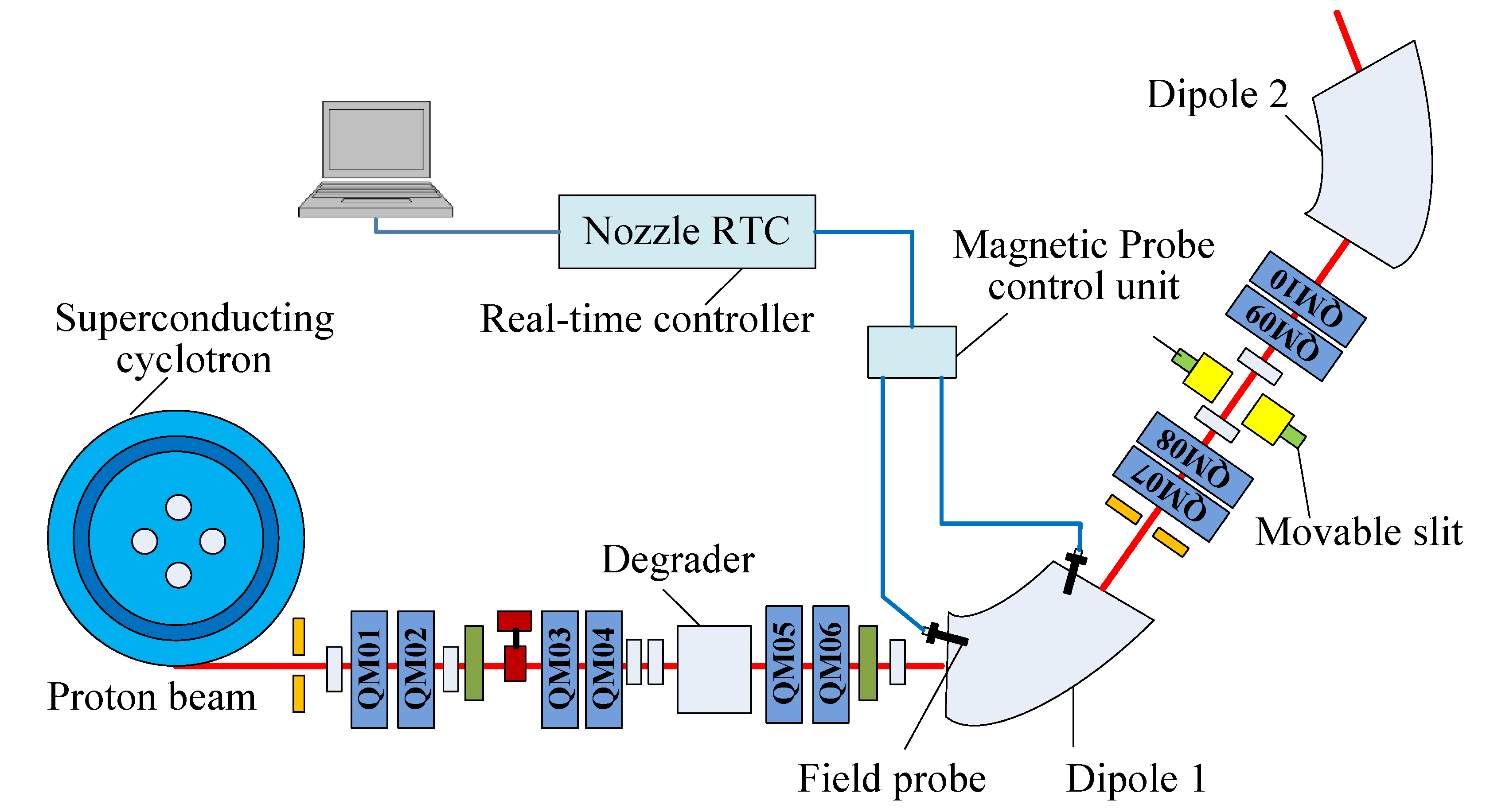

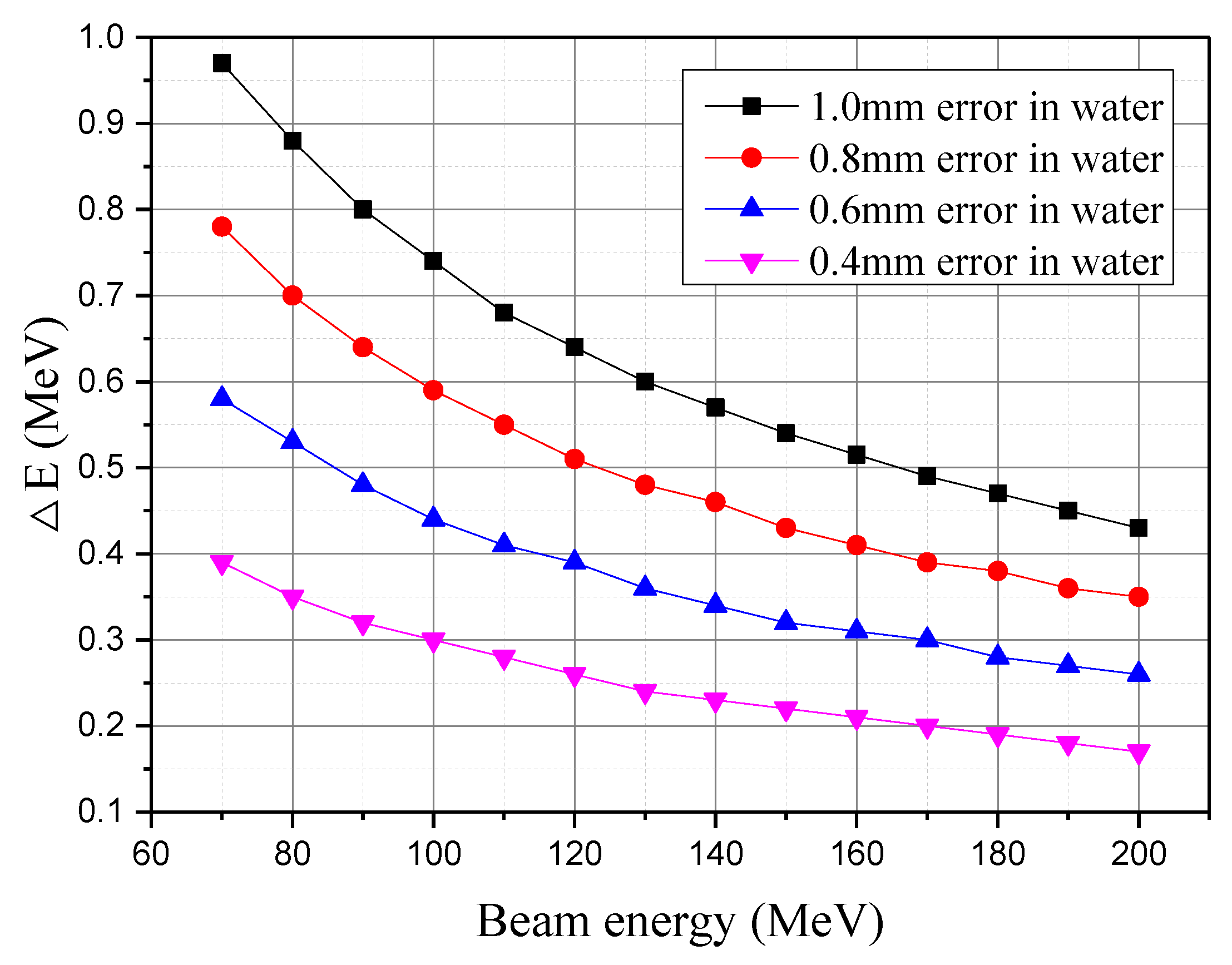
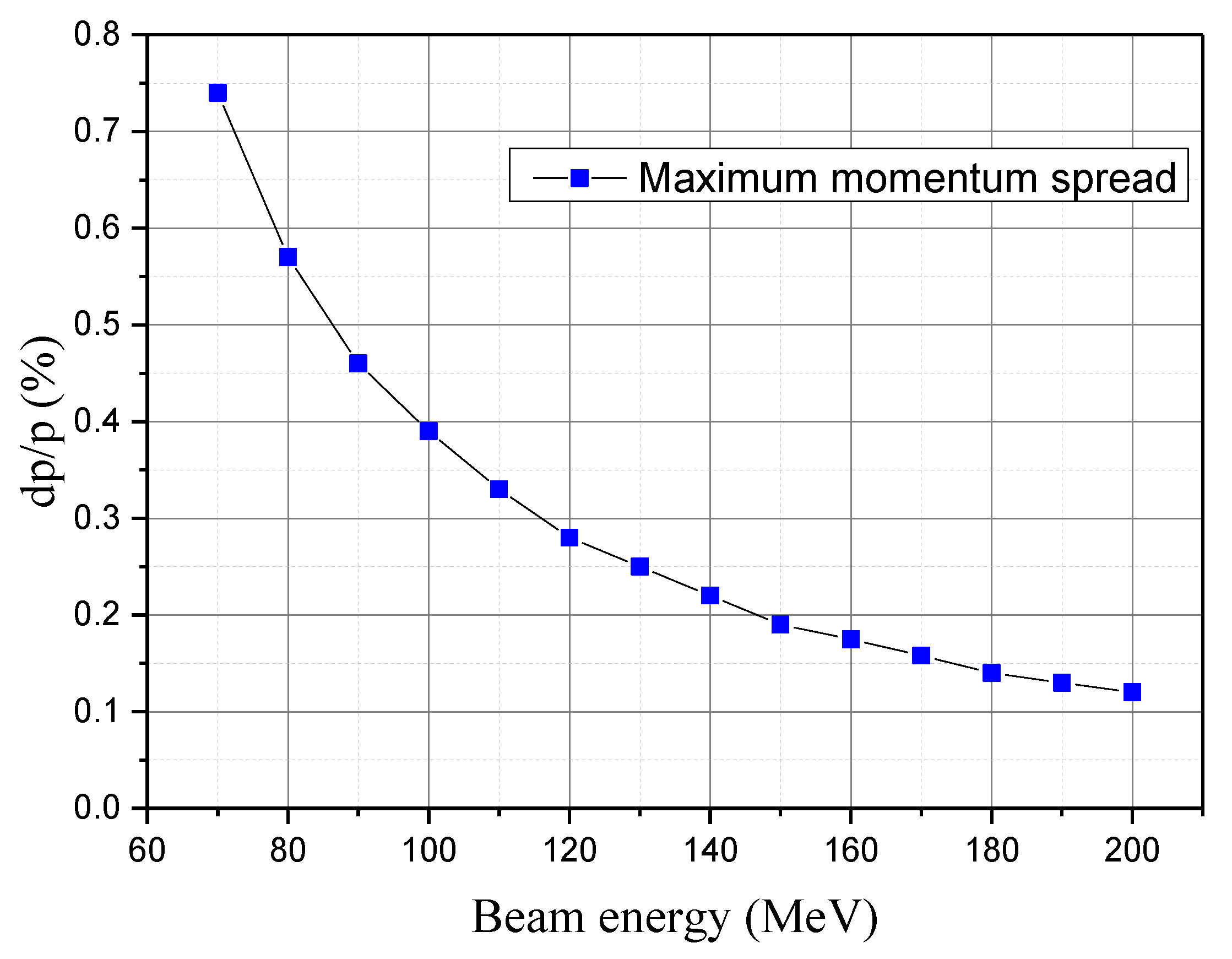


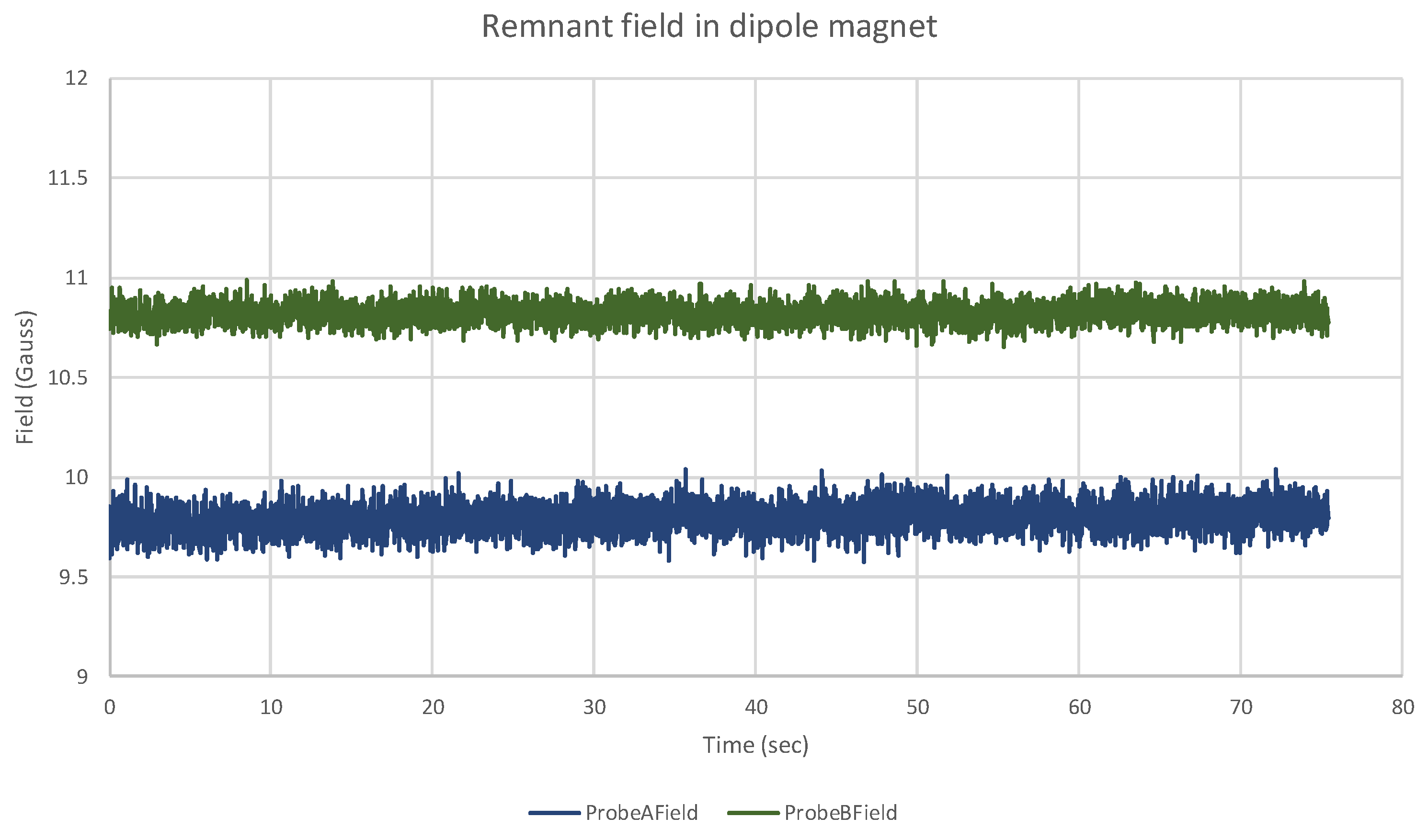
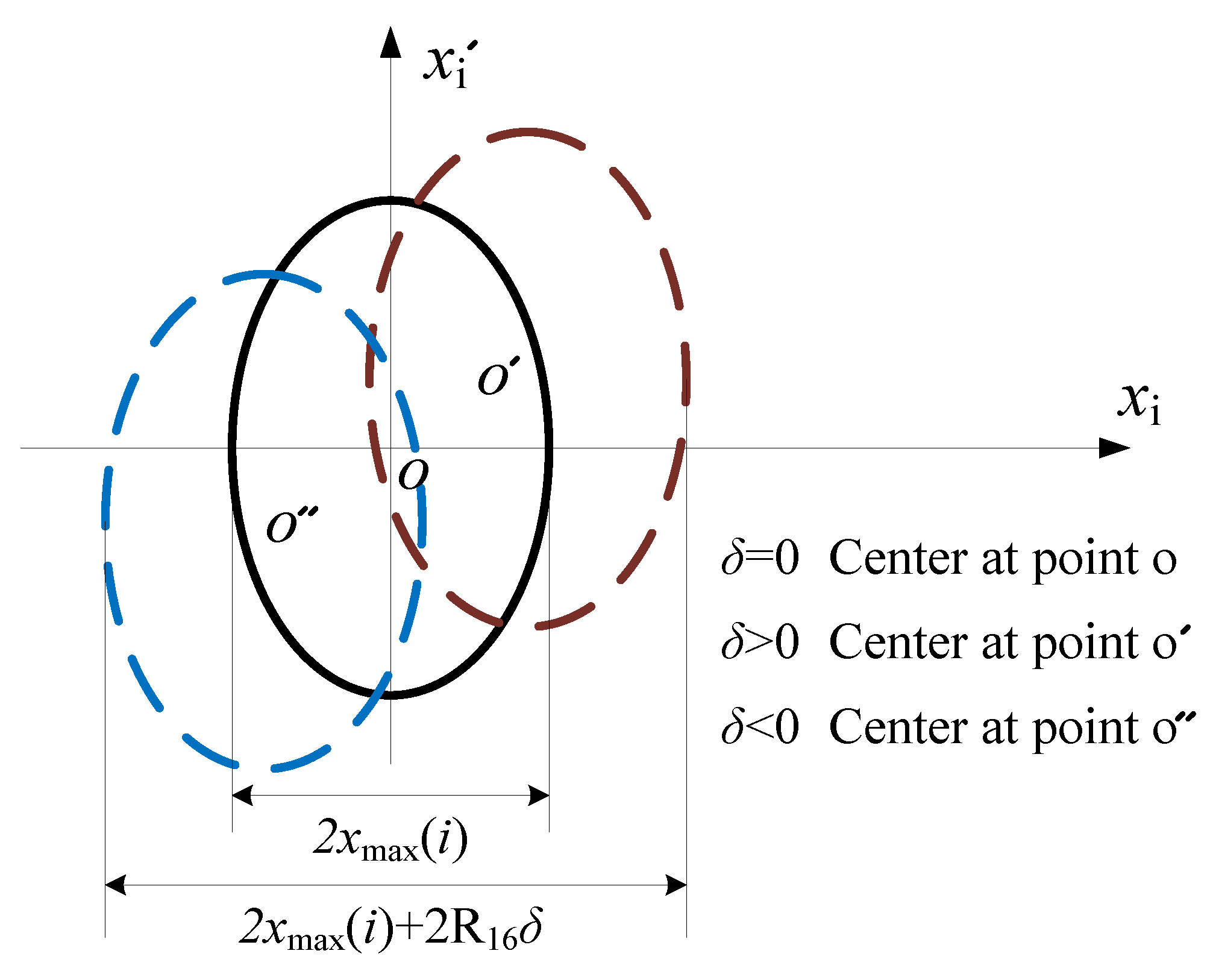

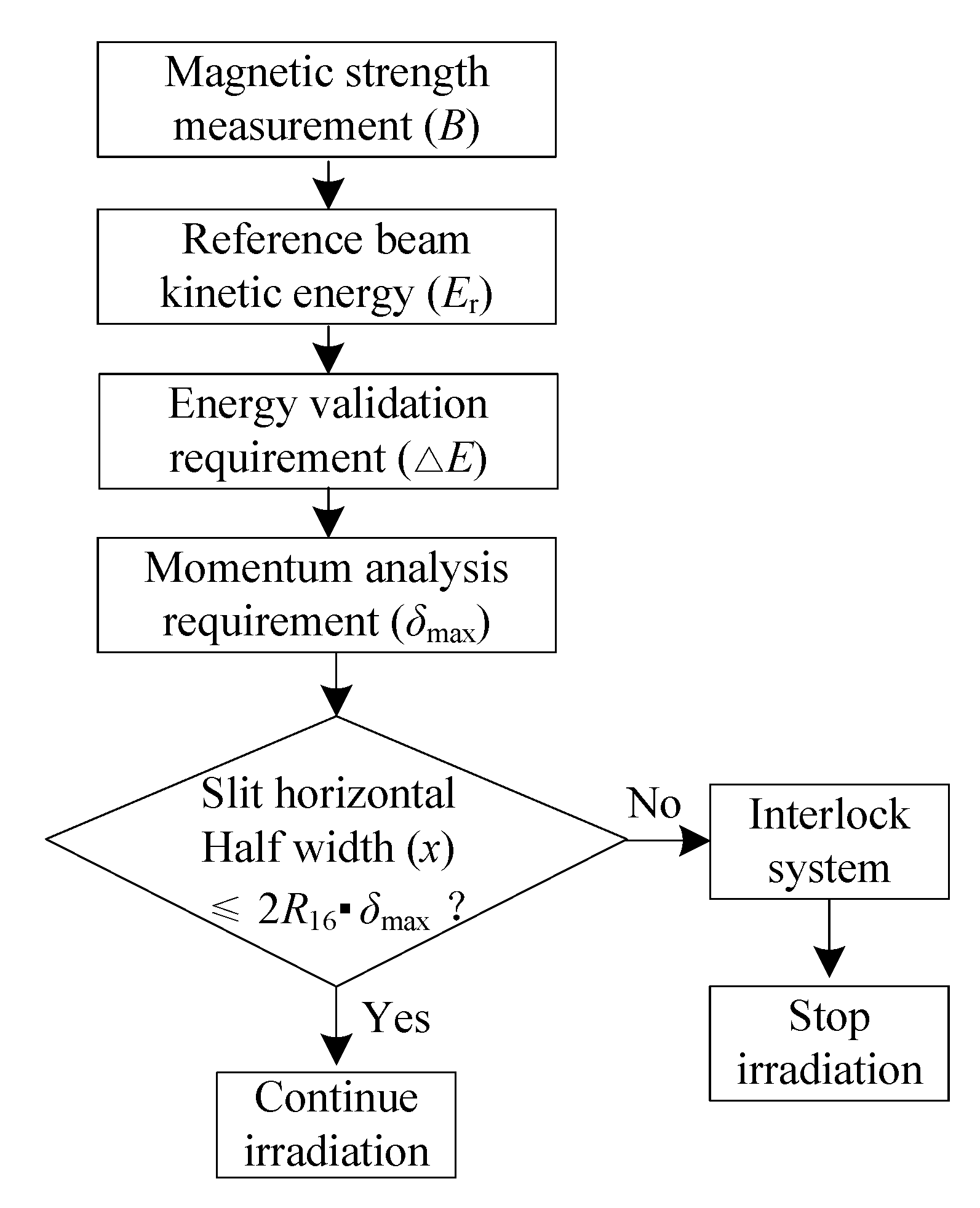
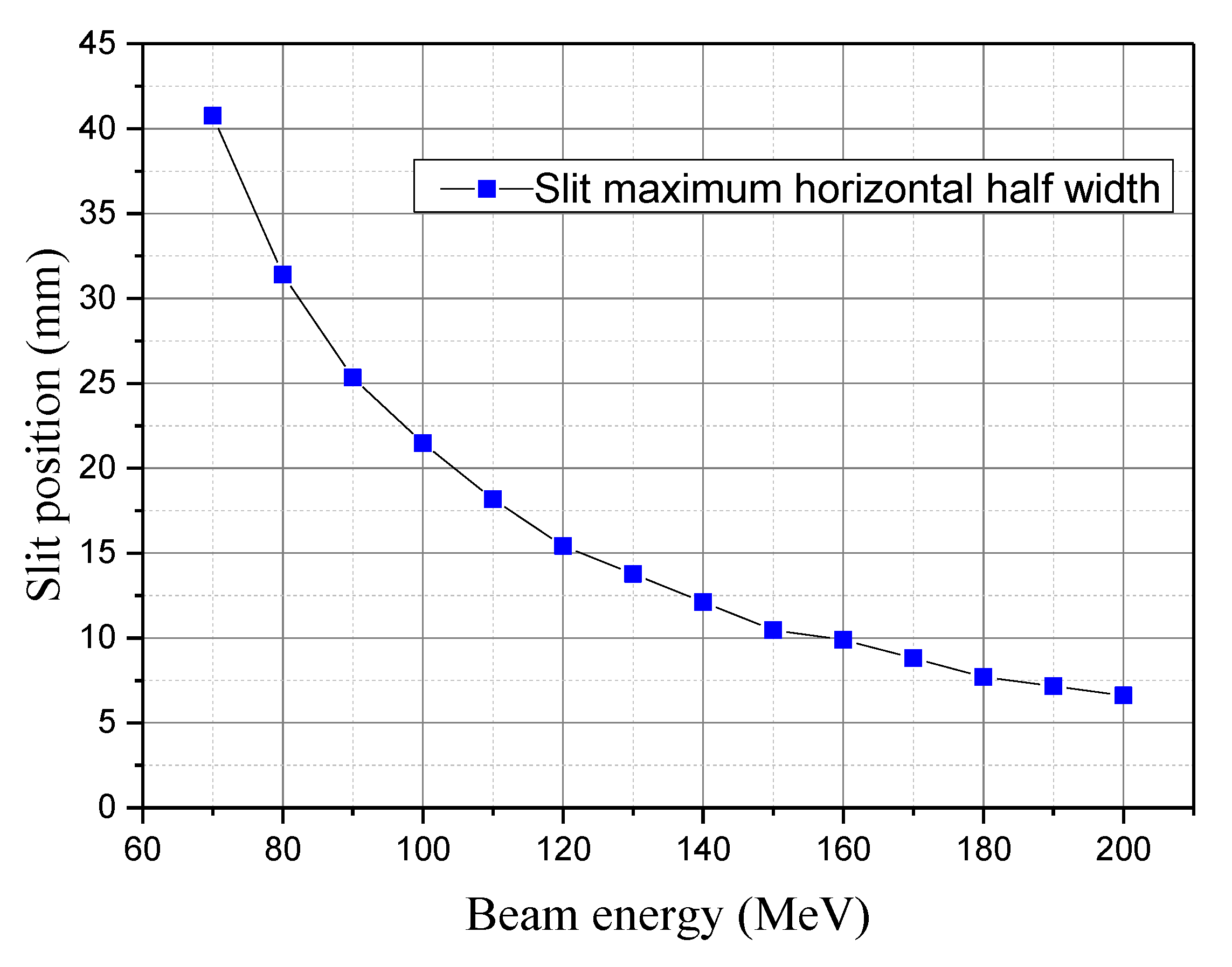
| Energy Er (MeV) | Energy Validation Requirement ΔEmax (MeV) | Magnetic Field Strength B (Gauss) | Allowable Difference ΔBmax (Gauss) |
|---|---|---|---|
| 70 | 0.97 | 7521 | 54 |
| 90 | 0.80 | 8572 | 40 |
| 110 | 0.68 | 9525 | 31 |
| 130 | 0.60 | 10407 | 26 |
| 150 | 0.54 | 11234 | 22 |
| 170 | 0.49 | 12019 | 19 |
| 190 | 0.45 | 12768 | 17 |
| 200 | 0.43 | 13131 | 16 |
© 2019 by the authors. Licensee MDPI, Basel, Switzerland. This article is an open access article distributed under the terms and conditions of the Creative Commons Attribution (CC BY) license (http://creativecommons.org/licenses/by/4.0/).
Share and Cite
Wang, P.; Zheng, J.; Song, Y.; Zhang, W.; Wang, M. Analysis and Design of an Energy Verification System for SC200 Proton Therapy Facility. Electronics 2019, 8, 541. https://doi.org/10.3390/electronics8050541
Wang P, Zheng J, Song Y, Zhang W, Wang M. Analysis and Design of an Energy Verification System for SC200 Proton Therapy Facility. Electronics. 2019; 8(5):541. https://doi.org/10.3390/electronics8050541
Chicago/Turabian StyleWang, Pengyu, Jinxing Zheng, Yuntao Song, Wuquan Zhang, and Ming Wang. 2019. "Analysis and Design of an Energy Verification System for SC200 Proton Therapy Facility" Electronics 8, no. 5: 541. https://doi.org/10.3390/electronics8050541
APA StyleWang, P., Zheng, J., Song, Y., Zhang, W., & Wang, M. (2019). Analysis and Design of an Energy Verification System for SC200 Proton Therapy Facility. Electronics, 8(5), 541. https://doi.org/10.3390/electronics8050541





